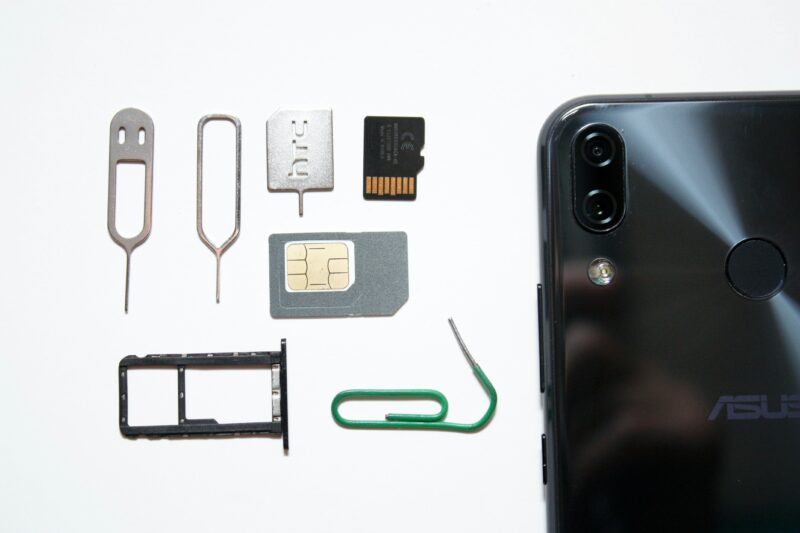Japan Internet Access: Your Guide to Staying Connected with Wi-Fi
Table of Contents
Staying connected in Japan is straightforward if you plan ahead. Whether you’re using Google Maps, keeping up with friends and family, or booking tickets online, having reliable internet access will make your trip much easier. This guide covers everything you need to know about Wi-Fi hotspots, SIM cards, and pocket Wi-Fi to ensure a seamless travel experience.
Free Wi-Fi in Japan: Convenient, But Limited

Japan has a well-organized network of free Wi-Fi hotspots, especially in major cities like Tokyo, Osaka, and Kyoto. Cafes, convenience stores like 7-Eleven and Lawson, shopping malls, and transportation hubs all offer free Wi-Fi access. Tourist areas such as Shibuya Crossing and Kyoto Station are especially reliable for connecting to public networks.
You’ll also find free Wi-Fi on public transport, such as the Tokyo Metro and many bus lines. Even smaller train stations often provide access points—perfect for quick map checks or travel updates.
To use these networks, you’ll typically need to register an email address or download apps like the ones below. Once set up, you’ll have access to a wide range of hotspots. However, speeds can slow down during peak hours, and connections may drop in crowded areas.
- Japan Wi-Fi Auto-Connect
The Japan Wi-Fi auto-connect app simplifies access to free tourist Wi-Fi hotspots across Japan. By consolidating registrations for various networks, users only need to register once to connect at multiple locations. Some personal information is required during the signup process. - Free Wi-Fi Passport
The Free Wi-Fi Passport program offers foreign visitors complimentary access to SoftBank Wi-Fi hotspots at popular locations such as restaurants, cafes, train stations, hotels, and more. To register, simply use a foreign mobile phone to call a toll-free number on the SoftBank network and receive a password for access.
If you’re venturing off the beaten path, don’t rely solely on free Wi-Fi. Many rural regions lack consistent connectivity. Locals often recommend having a backup, like a prepaid SIM card or pocket Wi-Fi, for peace of mind.
SIM Cards in Japan: Affordable and Flexible

A prepaid SIM card is a practical choice for solo travelers. It’s ideal for those who want internet access on their smartphones without carrying an extra device. Available at major airports like Narita Airport and Haneda Airport, you can also find SIM cards in electronics stores like Bic Camera and Yodobashi Camera. Ordering online in advance ensures smooth access upon arrival.
Types of SIM Cards
- Prepaid SIM Cards: These are tailored for tourists, with options for 7, 14, or 30 days. They’re simple to activate and don’t require contracts.
- Data-Only SIM Cards: If voice calls aren’t necessary, these are cost-effective and offer generous data plans.
- Tourist SIM Cards: Some providers include perks like free access to select Wi-Fi networks or discounts for attractions.
For more information on SIM card options, check out NTT Docomo or Japan Wireless.
What to Watch Out For: Make sure your phone is unlocked and supports Japanese network frequencies. SIM card vending machines at airports often provide instructions in multiple languages, but setting up the APN settings manually may still be required for some devices.
Pocket Wi-Fi: The Ultimate Solution for Groups
Pocket Wi-Fi is a favorite among families and groups. It’s a portable router that connects multiple devices, such as phones, laptops, and tablets, to the internet. Providers like Japan Wireless, Global Data, and Sakura Mobile offer rental services with unlimited data plans—perfect for navigating, streaming, or working remotely.
Why Locals Love Pocket Wi-Fi
Many locals swear by pocket Wi-Fi for its reliability in areas with weak cellular signals, such as mountain regions or rural villages. It’s also popular for group travel, as a single device can connect up to 10 devices simultaneously. Whether you’re uploading photos of Mt. Fuji or streaming your favorite show at night, pocket Wi-Fi ensures seamless connectivity.
Both Narita Airport and Haneda Airport offer pocket Wi-Fi rentals, allowing you to pick up a device upon arrival. Online pre-booking ensures availability and speeds up the process.
You can also order pocket Wi-Fi online for delivery to your hotel or pickup at the airport. Just remember to keep it charged—portable chargers are handy for long days exploring.
SIM Cards vs. Pocket Wi-Fi: Which is Best for You?
Both options have pros and cons depending on your travel needs. Here’s a deeper look:
SIM Cards
- Ideal For: Solo travelers or those who only need internet on one device.
- Advantages: Affordable, easy to set up, and highly portable with no extra gadgets to carry. Many plans include sufficient data for casual browsing, navigation, and messaging.
- Limitations: Limited data allowances on some plans may not suit heavy internet users. Your phone must be unlocked and compatible with Japanese networks. It’s also restricted to a single device.
Pocket Wi-Fi
- Ideal For: Families, groups, or travelers who need to connect multiple devices.
- Advantages: Unlimited data plans provide freedom for heavy internet use like streaming and video calls. Supports up to 10 devices, making it perfect for sharing. Reliable connectivity in rural areas.
- Limitations: Requires carrying an additional device and keeping it charged. Rentals are slightly more expensive than SIM cards.
Recommendation
For short trips, SIM cards work well for solo travelers or light internet users. If you’re traveling in a group or want a seamless connection across multiple devices, pocket Wi-Fi offers greater flexibility. Consider combining the two: use pocket Wi-Fi as your primary internet source and a SIM card as a backup.
Popular Apps to Stay Connected in Japan
- Equipping yourself with the right apps can transform your Japan trip into a hassle-free experience. From navigation to train schedules, these tools ensure you’re well-prepared for any situation:
- Japan Wi-Fi Auto-Connect
This app simplifies access to free Wi-Fi hotspots across Japan by unifying the registration process for multiple networks. Once registered, you can connect to thousands of hotspots without additional setup. Ideal for travelers relying on Wi-Fi for connectivity. - Free Wi-Fi Passport
The Free Wi-Fi Passport program offers foreign visitors complimentary access to SoftBank Wi-Fi hotspots at popular locations such as restaurants, cafes, train stations, hotels, and more. To register, simply use a foreign mobile phone to call a toll-free number on the SoftBank network and receive a password for access. Learn more at SoftBank Free Wi-Fi Passport. - Navitime for Japan Travel
This app is specifically tailored for tourists, offering offline maps, train route planning, and guidance on using public transportation. It’s especially useful for first-time visitors unfamiliar with Japan’s transit systems. - JR-EAST Train Info
This app provides up-to-date information on train schedules, delays, and platform changes for JR East-operated lines, including the popular Yamanote Line. Perfect for navigating Tokyo and surrounding areas. - Google Maps
A must-have for navigating Japan’s intricate cities. Whether you’re walking, driving, or using public transportation, Google Maps provides accurate directions and estimated travel times. It also highlights nearby attractions, restaurants, and reviews to make exploring easier. Tip: Download maps offline for areas with limited connectivity. - Google Translate
Break through language barriers with Google Translate. Its photo translation feature is perfect for reading Japanese signs, menus, and labels. Use the conversation mode for real-time voice translation when speaking with locals.
While Japan has extensive internet coverage, downloading maps, train schedules, and other app data offline ensures you stay connected in remote areas. This is particularly important when hiking in rural regions or visiting less touristy attractions where signals may be weak.
With these apps, your trip to Japan will be smoother, more enjoyable, and well-organized. Download and set them up before your trip to save time and avoid unexpected connectivity issues.
Wrap Up
Staying connected in Japan doesn’t have to be complicated. Whether you choose free Wi-Fi, a prepaid SIM card, or pocket Wi-Fi, there’s a solution for every type of traveler. Planning ahead—such as ordering a SIM card or pocket Wi-Fi in advance—ensures a hassle-free experience from the moment you land.
Reliable internet access means you can focus on enjoying Japan’s unique blend of tradition and modernity. Gear up, stay connected, and immerse yourself in all that Japan has to offer.
| Need more travel tips? Read our Japan Travel Tips for a complete guide. |
Looking for a tour agency to help with your planning?
Contact Firefly Japan to book a private luxury tour in Tokyo & Kanto


